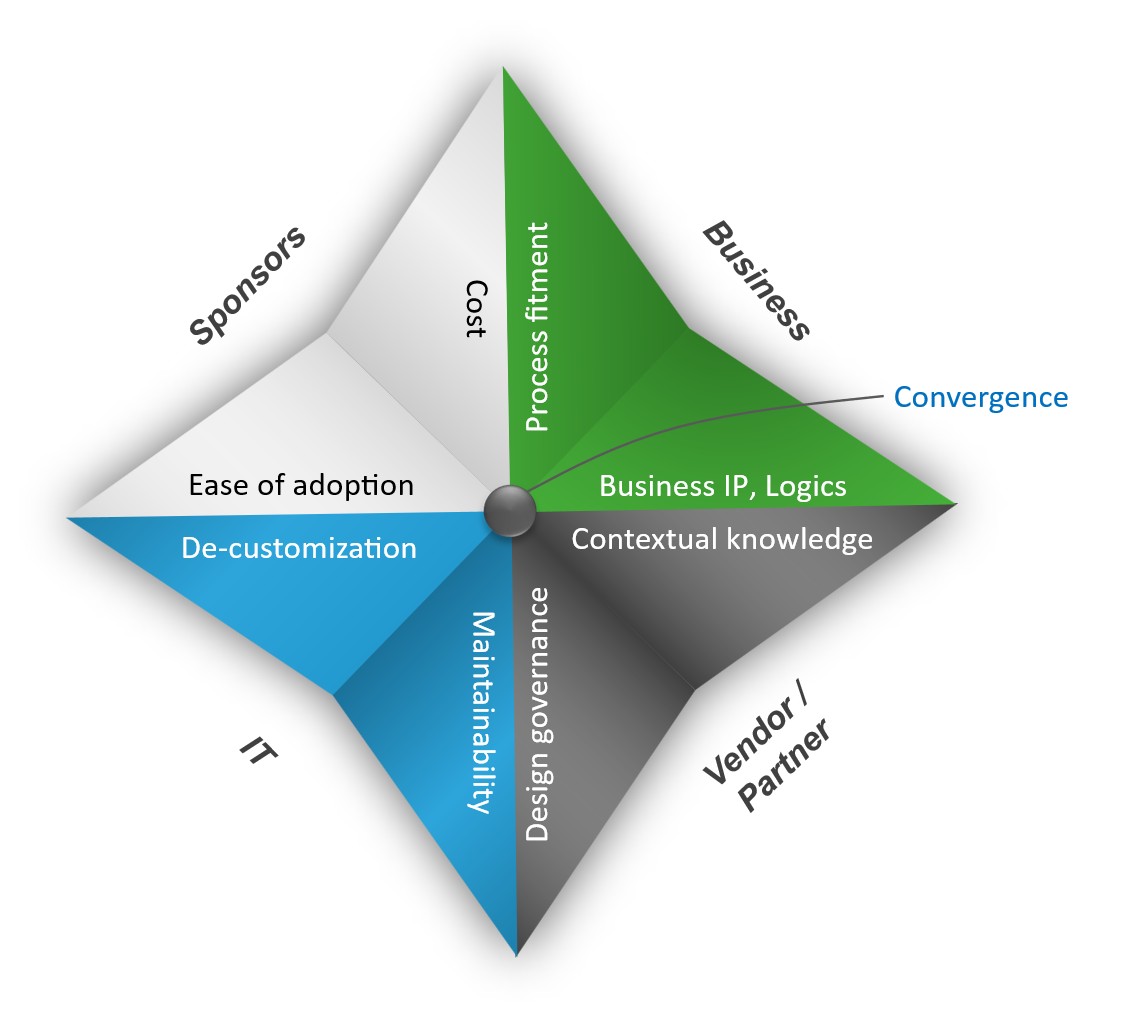Services
Highlights
- Product lifecycle management (PLM) systems provide key capabilities to manage the lifecycle processes of today’s complex products. They have only recently embraced the cloud at scale.
- PLM software vendors are moving towards cloud-hosted solutions and adopting a Software-as-a-Service model to quickly deliver new and improved capabilities to their customers.
- Organizations must carefully analyze their current PLM deployments and consider key business and technical factors before choosing the right cloud strategy for their PLM systems.
On this page
The case for SaaS
PLM systems are poised to transition to the cloud at scale.
Product information is vast and distributed across various enterprise systems throughout the value chain. A PLM platform serves as the digital backbone, enabling smooth information flow and supporting the vision of a connected digital enterprise (CDE). Cloud technology has driven PLM vendors toward a SaaS model, offering scalable, flexible, and globally accessible solutions. This fosters real-time collaboration and simplifies data sharing. SaaS also ensures continuous updates and reduces IT maintenance burdens. Its pay-as-you-go pricing makes advanced PLM tools more affordable, extending access to businesses of all sizes and enhancing agility in managing product lifecycles across distributed teams.
Key decisions
Organizations must evaluate several key parameters to arrive at a decision.
Customers are evaluating whether they should adopt PLM on the cloud to accelerate innovation and achieve operational efficiency. To arrive at an initial direction, they must answer three questions.
- Should you choose a centralized enterprise PLM platform or maintain diverse technology platforms, each suited to individual applications?
This dilemma is a classic challenge for customers with a multi-PLM landscape deployed in various business units. While a centralized PLM simplifies maintenance and lowers the cost of ownership, a multi-PLM approach provides individual units with the unique process variations that they have adopted to suit their business's specific needs.
- Should the platform be self-managed or vendor-managed?
The level of control over a PLM platform depends on its management. Self-managed instances allow enterprises to set release schedules, while vendor-managed ones follow a global calendar. This affects how often enhancements, upgrades, and deployments occur, potentially creating challenges due to frequent changes and limited flexibility.
- Will the platform meet the need for security and data control?
Product data security is paramount to any enterprise. Therefore, a deeper assessment of the platform, its support model, and team access model must be done to assess adherence to the security controls required by the enterprise.
Progressing further in the decision-making process requires critical evaluation of the key parameters listed below:
- IP protection: Effective collaboration on product data requires seamless, secure exchange with partners. Cloud-based PLM supports this, but organizations must first establish a strong security strategy to protect sensitive product information.
- Process fitment: The number of customer requirements being fulfilled by out-of-the-box (OOTB) capabilities needs to be analyzed. No platform will fulfill 100% of the business process needs; customizations are inevitable. PLM SaaS platforms have made provisions for customizations, however, with several restrictions.
- De-customization: This simplifies the landscape. However, the quantum of business processes and logic built over decades cannot be migrated to a SaaS platform easily.
- Costs: Transitioning to a PLM SaaS platform involves one-time costs for evaluation, licensing, setup, and deployment, along with recurring expenses for license usage, business validations, data updates, and deployment cycles.
- Ease of maintenance: This is a significant factor driving organizations towards SaaS platforms. This can ensure periodic and frequent platform upgrades for new innovative features. However, some customers could be overwhelmed by these feature releases.
- Adoption of the SaaS platform: A radical shift is required in the mindset of enterprise stakeholders, especially the IT owners. With the shift to a SaaS-based platform, their comfort and control over PLM environments to commit capability releases will be diluted. Business stakeholders will gain new responsibilities, collaborating with internal teams and external partners in a shared environment.
All these parameters from the context of various stakeholders need to converge in the decision-making process. To arrive at the final decision, a consultative approach, considering the views of all necessary stakeholders, is required.
Crossing the chasm
Walking the path with a comprehensive plan.
To ensure successful PLM SaaS transformation, the following critical success factors need to be considered:
- Contextual evaluation of the platform features, considering the customer’s process landscape along with the platform vendor’s feature release roadmap.
- Clear responsibility matrix for SaaS transitions, as these are multi-party engagements involving stakeholders from customer business, customer IT, vendor sales, vendor R&D, vendor support, implementation partner teams.
- PoC-driven release plan clearly articulates options and tradeoff items during feature implementation.
- Strong data model control and design governance, along with a carefully carved co-existence strategy enabling phase-wise feature rollout and reduced technical debt.
- Leverage of enterprise middleware for system integrations, enabling seamless collaboration across the product ecosystem.
A new horizon
SaaS PLM can bring a lot of value; your readiness will determine how you harness it.
Adopting a SaaS deployment model for PLM is a strategic and complex decision, requiring a fundamental shift in hosting architecture and stakeholder responsibilities. Leading PLM vendors invest heavily in SaaS platforms, focusing on innovative feature development to enhance user experience. Emerging technologies like genAI are reshaping business processes, search capabilities, and analytics, accelerating SaaS adoption. Cloud-based PLM unlocks new possibilities, which alone can be a compelling reason to migrate. However, a comprehensive 360-degree evaluation—covering cost, control, scalability, and collaboration—is essential to make an informed and future-ready decision.

